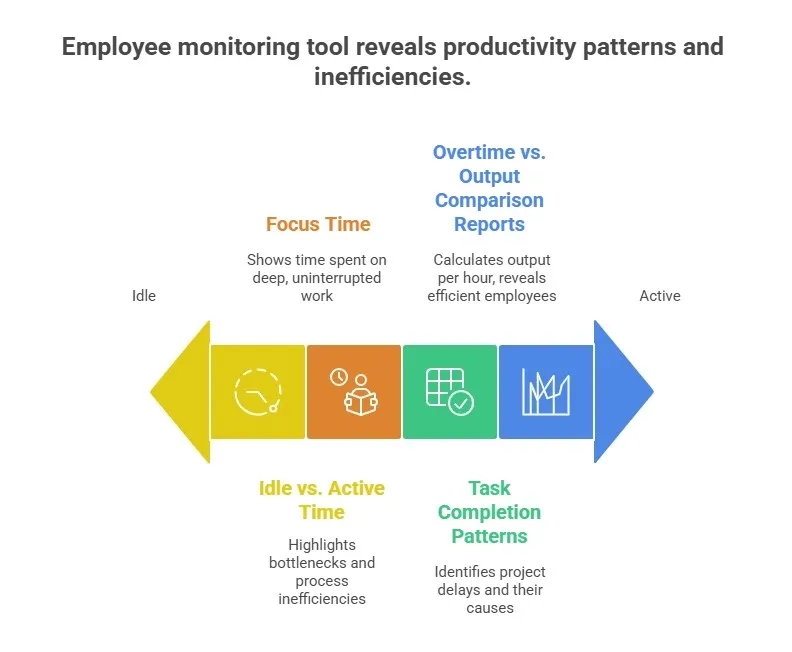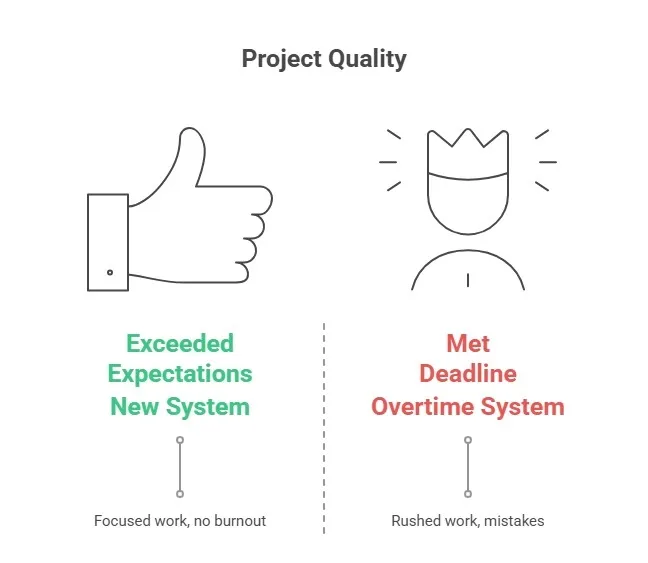The Overtime Trap: Detect Declining Output Quality Before it Gets Too Late.

At our company, we used to follow a higher range of offers for employees who work overtime. Our target was to get more work done by keeping the employee motivated with a high offer.
But after a few months, we started to notice something odd!
Employees who are more into overtime now bring less fruitful results than those who are not involved! And this was giving our overall company a worse output than ever.
How did we notice that? And what was our approach to solving that issue? Today's blog will tell that story. Let’s begin, shall we?
Reveal overtime blind spots with real metrics
When “More Works” Stopped Working
After realizing over time that it is not the answer to get more valuable work, I was looking for ways to understand what approach works the best.
I searched through article after article, one Reddit post after another. But I could not make up my mind. Suddenly, my eyes got stuck on a solution. AI suggested to me an employee monitoring tool to understand which method works best for my team the best.
So instead of using it to track attendance, I tried it to get into metrics that actually matter. Here’s what I found out–
- Focus Time: The app shows how long each employee spent on deep, uninterrupted work. A detail into their productivity pattern. This gave me a clear picture of productive hours versus time spent jumping between tasks
- Task Completion Patterns: I could see which projects took longer than expected and identify why. Some delays were due to unclear instructions, others because employees were stuck waiting for feedback.
- Idle vs. Active Time: The monitoring tool highlighted where bottlenecks were happening. Like, long idle periods waiting for approvals or dependencies on other team members. This helped me pinpoint process inefficiencies that were invisible before, and allowed me to reassign tasks or streamline communication to keep everyone moving..Overtime vs. Output Comparison Reports: It calculated output per hour, which showed me that high-output employees often don’t need overtime to achieve great results.

Turn real-time work data into better decisions
Ending the Overtime Rule — And the Shocked Faces
When I finally decided to scrap the overtime-based rewards system, I knew it might ruffle some feathers. After all, everyone was used to thinking “more hours = more value.”
The announcement caused a mix of reactions. In fact, my boss was totally against it.
So, I explained the new approach. It focuses on quality, efficiency, and smart use of time, supported by the insights from our employee monitoring tool. Showed them how their deep work, consistent output, and project contributions mattered more than just clocking extra hours.
At that moment, my boss started rethinking the strategy to use productivity time. He then got interested in applying smart time usage instead of working overtime.
Reward deep work, not endless extra hours
Turnaround of Quality over Quantity
The real test came a few months after we ended the overtime system.
A major client project was on the line, and the deadlines were tight. Normally, this would take us to push the team into extra hours and late nights. But this time, we trusted the new system.
Employees focused on deep work sessions, used their dashboards to track progress, and collaborated more efficiently.

The strange thing was that, for the first time, no one in the team was burning out. Every task was completed with care. Even the productivity insights from the employee monitoring software helped me identify potential bottlenecks before they became serious.
Can you guess the result?
Not only did we meet the deadline, but the project quality exceeded client expectations. No employee got stuck with that overtime mindset. No one rushed to work or made any mistakes in the project.
The right time application on detecting the overtime trap helped us prefer quality over quantity.
Swap burnout cycles for calm, focused delivery
Smarter Works Always Wins
When I look back, I realize our team once focused too much on working overtime. It seemed like we were achieving more, but it actually led to more reviews, more errors, and more stress.
But, we were totally able to turn that scenario around by applying the new method before it got too late. The data from our employee monitoring tool helped us see what was really happening during work hours. We could finally understand how time was spent, what slowed progress, and where to make improvements.
If you ever feel your team’s productivity is not where it used to be, give an employee monitoring solution a try. It can completely change the way you manage work.
And who knows, you may find out more helpful features than our team had?
Let data quietly guide every workday choice